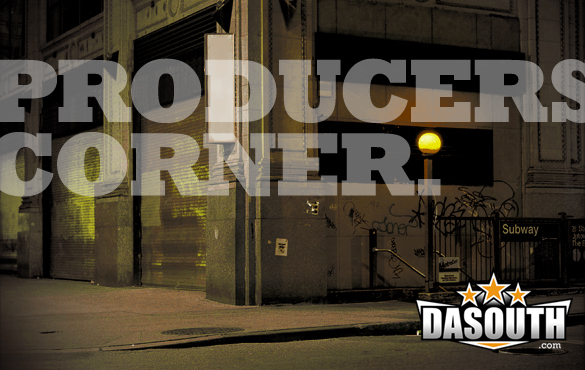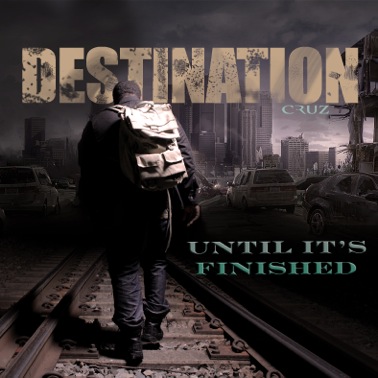
If one studies hip hop production diligently one will discover a set of passed down and copied techniques for hip hop music production. In part 1, we’ll briefly take a look at some of these timeless techniques I use regularly in an attempt to make artists and listeners crave the beats they hear from me.
First we’ll start with the intro. Paying close attention to music production one can gather that the most successful beats have short intros. Listeners want you to get to it quickly. Unfortunately, this takes a lot of the creativity out of music today. If we venture back to the pre-1980 era of music we see that artists took great liberty to express themselves in music and they were respected and celebrated for it. Isaac Hayes for instance was known for long beautiful intros (i.e. Walk On By). Short intros were reserved mostly for pop music designed for radio airplay. However, most listeners have come to expect all songs to “get to the point”. So if you find yourself wanting to create 30 second to 1 minute long intros think again. Shorten it to no more than four bars. Now, that doesn’t mean the drums have to drop in four bars, it just means that the bed for the artist to begin the song should come in no later than four bars.
Now that the intro has passed what should you do next? Hook or verse? I believe this starts with the vision you have for the song, not just the track. Either is acceptable. However, I prefer to create anticipation in the listener. I like to delay the joy of the listener to get the most out of the moment so the majority of my beats will start with the verse. Now, many producers waste great opportunities by not taking the verse bed seriously.
The verse bed is a great place for producers to set themselves apart from other producers and begin to develop a noticeable and distinguishable style. There are two schools of thought when creating the verse bed. I’ll give my least favorite first. First, a producer can create simple semi-static verse bed that doesn’t stand out and just provides a nice bed for the artist to rap on and be the sole focus of the song. I see plenty of this in production today. This style typically has very little changes in the verse, is usually filled with simple melodies and/or chords just meant to give the artist a comfy place to rap or sing. I’m not knocking this style but I honestly find it quite boring to listen to. Some artists love it because they don’t have to “compete” with the beat and it allows them to shine with minimal effort…to each his own.
Secondly, and my favorite, is actually adding timely changes, tricks, and techniques. This emphasizes what the artist is saying at different points of the verse and gives the listener something else to listen to should they choose. I am a firm believer that musically the verse should be interesting and keep the listener engaged just as much as the hook does. This does take time and thought but not much when you make it apart of your beat making methodology. Let me give you an example of how I do this: 9.5 times out of 10 a verse should be 16 bars. When I make a beat I split the 16 bars into 4 parts and my main focal points are the 4s, 8s, 12s, and 16s of every verse. This means 4 bars into the verse, there should be some sort of change in the beat to let the listener and the artist know that we are now headed into the next for bars.
This can be done with a drop/change in the drums/drum pattern or a drop/change in the instrumentation. It can also be done easily with some sort of transitional effect (i.e. The Just Blaze rising effect that’s been massively overused and brutally abused for the last decade…I’ve made a pact with myself to never use it again). Now, that we’re heading into the 2nd set of 4 bars, we now have the end of the 8th bar to look forward to. Typically, I make the end of the 8 different than the end of the 4 because we’re now half way through the verse and that’s a major point of the verse. I may also take the start of the second half of the verse to introduce a new instrument. Most listeners love to be surprised and it shows patience and creativity on the part of the producer. Heading into the end of the 12 I may just end the 12 the same way I ended the 4th bar. I may also just drop the bass-line during the 3rd quad of the verse. You’d be amazed how dropping the bass-line then bringing it back can really add versatility and power to a certain part in the song.
Now, the most important part of the verse is the last 4 bars or heading into the 16. If I’m feeling really creative the last four bars will be completely different than the rest of the verse in preparation for the what should be the most exciting part of the song: The hook. The best producers create the greatest anticipation for the hook. There are dozens of ways a producer can do this musically. You can have a musical build up leading to a climax, even totally dropping out all sound for a short count and bringing in the hook with power depending on the type of song it is. I can’t list them all, but this is where the beauty of music comes in to play and you have the liberty to be as different as you want to be. There are no rules at this point of the song.
What I’ve just described are called transitions and they are extremely important to the emotional aspect of a song. Great transitions take a lot of practice. If you listen to your favorite producer you will notice them. In fact, I can’t think of any well-known producer that doesn’t do them well.
In closing, you should study, study, study and practice, practice, practice. Don’t be lazy as a producer and settle for mediocrity. The beats in CHH should be better than the beats in secular hip hop because we are at a disadvantage. Most people are going to be alot more critical of our music than the music of the world. We should seek to astonish, and amaze every listener of our music. In part two, I’ll go into more verse techniques and dive into what makes great hooks. For examples of the techniques I’ve spoken of here, visit www.jimmynatural.com.
God bless,
Jimmy Natural
website: www.jimmynatural.com
twitter: @jimmynatural000
email: tracks@jimmynatural.com



